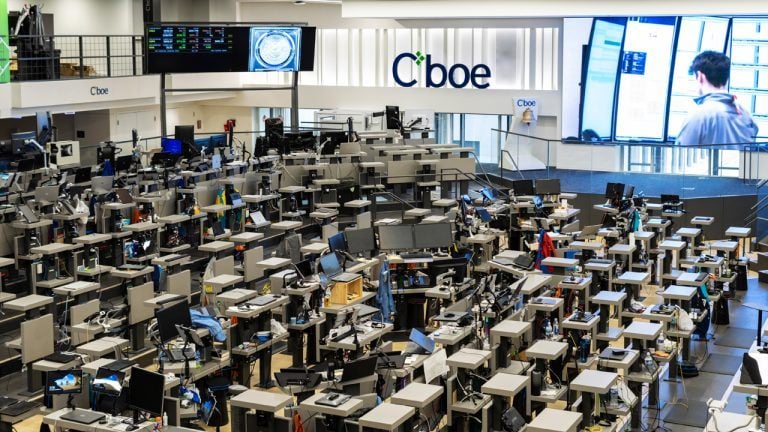
A Stronger Web 3.0 Means (Strategically) Working With Centralized Entities
HodlX Guest Post Submit Your Post
The crypto industry is unlike any other space for many reasons. But perhaps the primary difference between crypto and Web 3.0 in general and mainstream tech or the auto industry, for example, is removing dependency on centralized, trusted authorities.
From DAOs and DEXs to DApps, DeFi (decentralized finance) is an irreplaceable tenet of crypto and blockchain and therefore Web 3.0.
Now that traditional financial institutions the polar opposite of decentralized organizations seek exposure to crypto and DeFi, the industry is at a fork in the road.
Many industry voices recognize this interest in crypto as an amazing growth opportunity and can find room for compromise, while decentralization purists or ‘degens’ take a more hardline approach.
But with TradFi (traditional finance) and centralized entities creeping into Web 3.0, how can the industry maintain growth while safeguarding its core principles?
Collaboration over isolation
As we witness more partnerships and collaborations between blockchain protocols or Web 3.0 organizations with mainstream finance or other centralized entities, both sides still hold some reservations.
While TradFi wants to leverage blockchain technology to offer tokenized RWAs (real-world assets) and provide clients exposure to DeFi and top-performing tokens, there are legitimate compliance concerns alongside sizable industry sentiment that crypto is run by scammers.
On the other hand, a vocal minority of crypto enthusiasts see any outside participation by a centralized authority as an existential threat and as betraying the industry’s ethos.
However, both sides need a different perspective on the inevitable overlapping of digital and traditional assets.
Just because two entities are fundamentally opposed on almost every matter doesn’t mean they can’t find common ground when it’s mutually beneficial.
Take, for example, today’s top global superpowers he US and China.
These two international heavyweights are economic, political and ideological rivals, but that doesn’t prevent them from collaborating in areas such as trade and scientific research if it serves their national interests.
Between decentralization purists, speculators and idealistic builders who hold major sway over the industry’s future, they must acknowledge that the ultimate shared goal of the Web 3.0 movement is to facilitate growth and adoption.
Achieving this goal requires expanding into new territories and forging relationships with TradFi and Web 2.0 organizations provides the path of least resistance.
Of course, to make this happen, Web 3.0 needs to meet outside partners halfway, particularly regarding legal compliance.
The space can no longer afford to operate in a regulatory void, as many of us live in the construct of the modern state where laws and standards govern everyone and everything.
Bypassing these rules sometimes worked while the industry was small and under the radar, but that is no longer the case and this is a good thing.
Since the crypto market surpassed $2 trillion in February 2024, some might argue that the industry has proven itself already and that working with outside organizations will undermine the Web 3.0 movement.
But this would be naive.
Why look outside Web 3.0 for growth
Web 3.0 is a collection of communities that ultimately form a larger, loosely aligned movement.
It can be compared to a social movement made up of different sectors of society working together to influence change.
While each community encapsulates diverse voices and opinions, the end game of mainstream adoption remains the ultimate objective despite differing tactics on arriving there.
Internal debates on accomplishing this objective should, of course, be ongoing and strategic.
Yes, working with outside organizations particularly traditional finance, fintechs and e-commerce can be lucrative and mutually beneficial.
However the onus is on Web 3.0 thought leaders to find ways to communicate the value of expanding the blockchain ecosystem’s reach into these strategic domains.
Shunning centralized entities whether a global investment firm or a mid-sized e-commerce platform that boost innovation, remove regulatory barriers and expand user bases is simply a missed opportunity.
DeFi’s TVL (total value locked) stands at just over $90 billion while traditional retail banking’s projected net interest income for 2024 alone will reach $8.3 trillion.
That potential added liquidity in exchange for mutually beneficial cooperation can’t be squandered.
Furthermore, centralized entities have been operating within the Web 3.0 space all along.
Although some produced scandals, it hasn’t derailed the industry if anything, they’ve helped fuel its growth by making it easier for users to interact with digital assets.
Web 3.0 organizations whether fully decentralized or not owe it to the broader industry to take advantage of partnership opportunities from outside organizations if there is a clear benefit.
As TradFi and crypto players continue feeling each other out, Web 3.0 now holds the leverage to dictate the nature of these collaborations and partnerships.
Web 3.0’s infrastructure and protocols are attracting outside players. And blockchain’s novelty and potential enables game-changing efficiency such as instant settlement, peer-to-peer transactions, reduced counter-party risk and seamless cross-border value transfers that entice Web 2.0 organizations and the financial world.
The Web 3.0 industry must cooperate with outside parties because they can boost the industry’s legal standing and make increasingly relevant compliance more efficient.
Further supporting this claim is the sheer fact that the masses still are TradFi and Web 2.0 users. This means achieving growth requires flexibility and easy solutions and mechanisms to reach the walled-off majority.
Connecting with centralized entities now as opposed to down the road allows Web 3.0 to maintain a stronger position and will create the needed network effect, accelerate adoption and turn siloed crypto innovations into pervasive features of everyone’s daily life.
Eitan Katz is the CEO and co-founder of Kima. Prior to Kima, Eitan served as a seasoned executive with a distinguished background and leadership roles with the IDF, HP, HPE and BMC. His list of accomplishments includes building HP’s Global Innovation and Incubation program, leading HPE’s Enterprise Mobile platform, and being a 3X founder, as well as a founding member of Aegis, the first MPC-based Bitcoin wallet.
Follow Us on Twitter Facebook Telegram

Disclaimer: Opinions expressed at The Daily Hodl are not investment advice. Investors should do their due diligence before making any high-risk investments in Bitcoin, cryptocurrency or digital assets. Please be advised that your transfers and trades are at your own risk, and any loses you may incur are your responsibility. The Daily Hodl does not recommend the buying or selling of any cryptocurrencies or digital assets, nor is The Daily Hodl an investment advisor. Please note that The Daily Hodl participates in affiliate marketing.
Featured Image: Shutterstock/eliahinsomnia/Webuz
The post A Stronger Web 3.0 Means (Strategically) Working With Centralized Entities appeared first on The Daily Hodl.
Go to Source
Author: Eitan Katz








